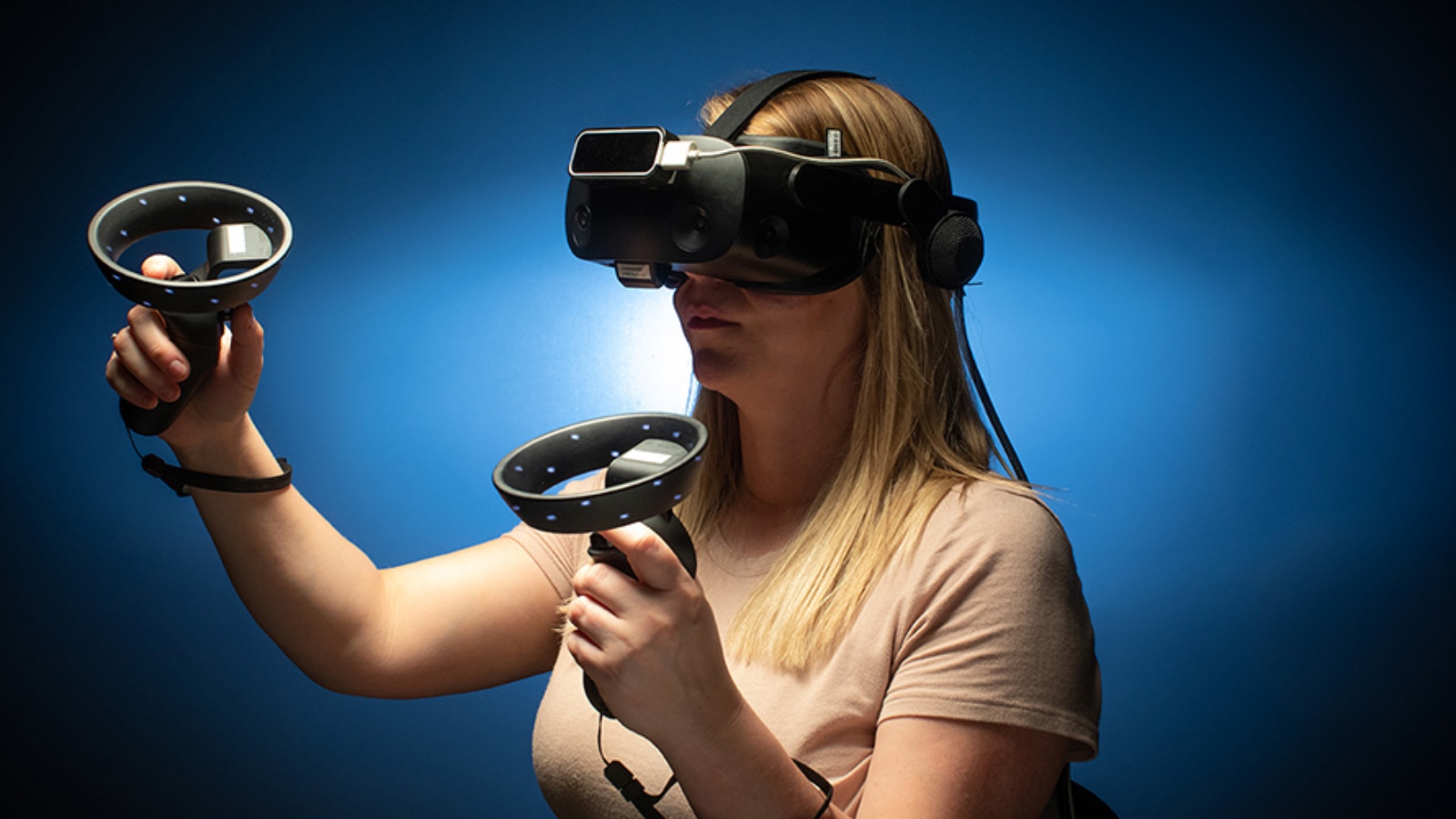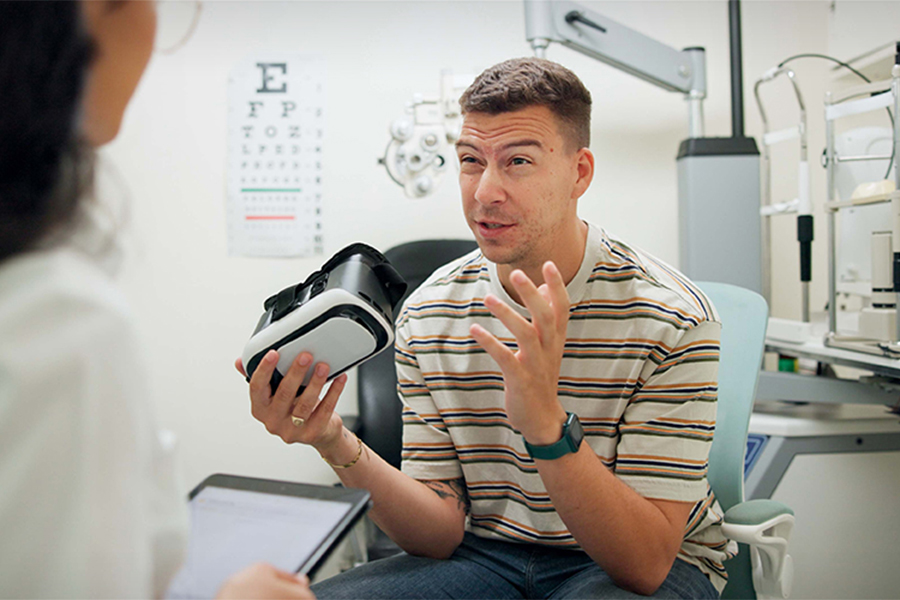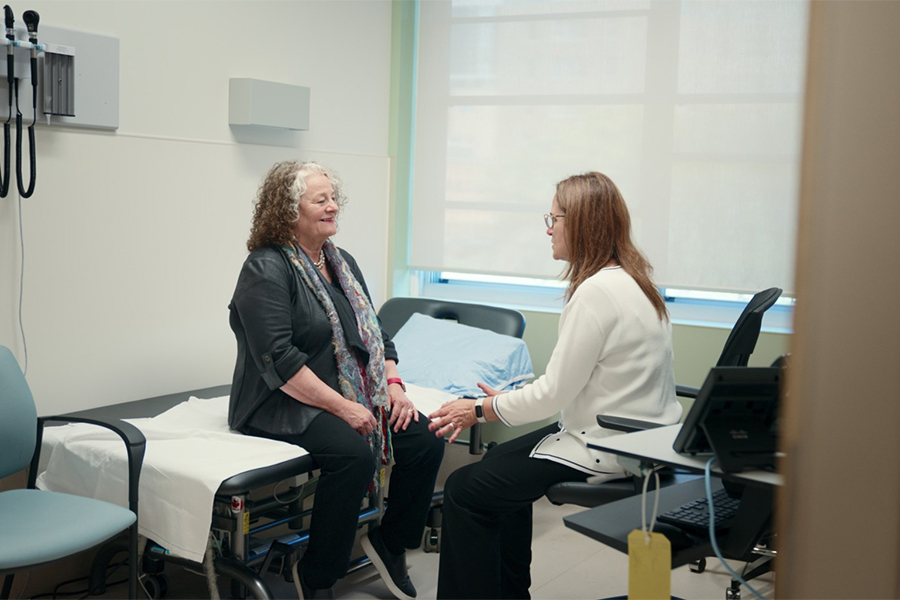
By Nina Dragicevic
When most people imagine a research lab, they think of a large space with complicated medical machinery.
PerceptionLab at UHN’s KITE Research Institute is entirely different – a small room, painted black, with screens and equipment along the edges of the space.
Its small size is almost surprising for a lab currently running five studies at once, and that has hosted roughly 20 others – but here, physical space is not the point. The world is entirely virtual.
Sitting on a small chair with a virtual reality (VR) headset on, the lab disappears: you’re gently floating through infinite outer space, small meteoroids passing by. In the simulation, you can reach out your hand and see an avatar of your own arm – touching the meteoroid, it softly bursts.
But then the simulation changes. Now you are rotating while moving, spinning through space, the distant stars and passing meteoroids are swirling. You feel uncomfortable. Queasy.
Dr. Behrang Keshavarz, Senior Scientist at KITE, stops the simulation. Many people will experience visually induced motion sickness (VIMS) during this experience – one of the oddities of his job, he jokes, is to make people feel sick.
Dr. Keshavarz designed PerceptionLab to research human perception and performance in virtual environments, and especially the common but mysterious phenomenon of motion sickness. His work uses monitors, videos and virtual reality to make participants feel immersed in what they can see, and he studies their physiological reactions.
He had the small room painted matte black so the walls wouldn’t reflect light from the screens and monitors – a distraction from intense visual experiences such as a first-person video of a bumpy bike ride through cobblestone streets.
More than a decade ago, Dr. Keshavarz’s goal was to cure motion sickness completely, but that aim is further away than he originally thought. Now he works to reduce it, to predict it, and the most elusive goal of all – to understand it.
“The more I learned about it, the more I noticed how complicated it is, how complex it is, how multifaceted it is, and how many different variables are at play – and that I found really interesting,” Dr. Keshavarz says. “It grew. It grew much more than we expected it to be at the beginning.” Read more.

No one ever changed the world on their own but when the bright minds at UHN work together with donors we can redefine the world of health care together.


